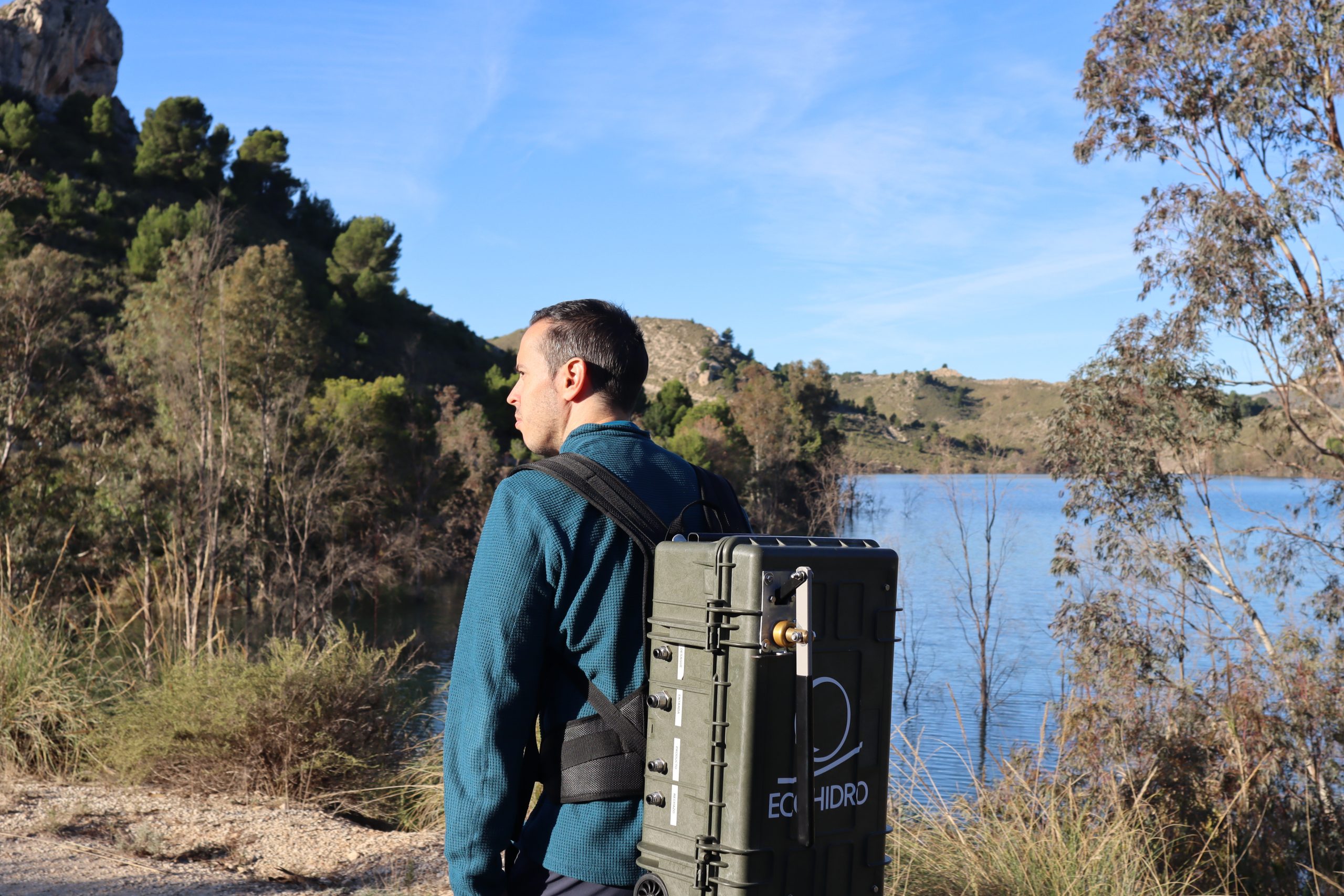Research and
Development
R&D, the key to product differentiation.
Since its creation in 2006, EcoHidro has completed nine R&D projects, which implies that research and development projects are a fundamental part of the company's DNA. From these research projects, conclusions have been drawn to incorporate new technologies into our solutions or new commercial products have been developed that are currently included in the product catalog marketed by EcoHidro.


The company's Research, Development, and Innovation (R&D&I) strategy is fully linked to the development of EcoHidro's own activity, and the main objective is to make research a constant throughout the life of the company. At EcoHidro, we consider it essential to research new technologies or improve existing ones to differentiate ourselves from our competition in an increasingly globalized world where water treatment technologies are becoming more relevant for both environmental and health reasons.
R+D Projects that we have develop at ECOHIDRO
PROYECTO CYER 2023
Desarrollo de un sistema de recuperación de energía de la salmuera resultante en procesos de desalinización de aguas salobres y baja salinidad:
Colabora: UPCT. Departamento de Ingeniería Térmica y de fluidos. Profesor: Antonio Viedma (Catedrático en mecánica de fluidos)
Achieved objectives
- Ahorro energético significativo en torno al 30-40% respecto a la misma instalación, sin el recuperador instalado, a partir de la generación de salmuera en procesos de osmosis Inversa bajo las exigencias necesarias en procesos de tratamiento de agua salobre de baja y media salinidad.
- Versatilidad para facilitar la instalación en cualquier desalinizadora existente o desalinizadoras de nueva construcción
- Amplio rango de operación
- Coste de fabricación competitivo
- Aumento del caudal de entrada a las membranas
- Reducción del consumo de energía eléctrica.
- Debe evitar el uso de consumibles y minimizar en lo posible el mantenimiento de este.
- Diseño robusto y fácil de manejar por cualquier persona sin cualificación.
UFAA (2016-2018) (CDTI):
“Development of an innovative and highly efficient cleaning process for ultrafiltration membranes.”
Collaboration: CEBAS-CSIC
Achieved objectives
- Testing of complex waters: laden with solids, detergents, oils, and fats.
- Testing of various pretreatments on ultrafiltration membranes.
- Reduced water consumption for cleaning by 50%.
- Shorter cleaning time, leading to increased water production.
- Reduction of energy consumption by 15%.
FILTERCANTER (2014-2015) (CDTI):
“Development of a prototype for minimizing or eliminating the secondary clarifier in an MBBR (Moving Bed Biofilm Reactor) wastewater treatment system.”
Achieved objectives
- Alternative removal of suspended solids and inclusion of air-assisted systems for water savings.
- A 25% reduction in the volume of the settler is achieved with a filtering stage.
HidroBIO (2009-2011) (CDTI)
“Estudio de tratamiento biológico de aguas residuales urbanas mediante lechos en suspensión.”
Collaboration: CETEC
Achieved objectives
-
- Design and development of a microbial support to expand the purification capacity of existing wastewater treatment plants operating with Activated Sludge systems.
- Eficiencia de depuración conseguida superior al 97%
- Mayor capacidad de depuración en mucho menor espacio.
- Optimización del diseño de los soportes para materia orgánica.
- Desarrollo de una gama de producto (MBBR)
MicroETAP (2006-2007)
(Institute for Business Development of the Región of Murcia)
Modular Potable Water Treatment Station
Achieved objectives
-
- Incorporation of membrane technology (UF_RO)
- Study of suitable materials.
- Optimization of initial membrane cleaning systems.
HIDROSURVIVE (2020-2022) (CDTI Dual):
“"Drinking water survival backpack"”
Collabaration: Leuman Sistemas de Defensa S.L.
Achieved objectives
- Guaranteed supply of potable water meeting the quality standards set by the World Health Organization (WHO).
- Easily transportable to hard-to-reach locations.
- Manual operation without the need for electrical power.
- Incorporates a self-cleaning system that efficiently recovers the filter media.
- Robust design and easy to handle by anyone without specific qualifications.
SEARRISOST (2018-2021) (CDTI):
“NEW TECHNOLOGICAL ADVANCES FOR A SUSTAINABLE IRRIGATION MANAGEMENT WITH DESALINATED SEAWATER”
Collaboration: Nutricontrol S.L., IMIDA y UPCT.
Achieved objectives
- Treatment of water from a desalination system with presence of Boron, for use in irrigation.
- Proven effectiveness of a second step of Reverse Osmosis for its removal, as well as the study of ion exchange resins.
- Adaptive irrigation with fertilizer recipes based on the time of year, types of fertilizers, water source, soil type, etc.
HIDROSTATION (2014-2015) (CDTI)
“Our collaboration involved developing a comprehensive water treatment system for isolated service stations.”
Achieved objectives
-
- Design and development of a comprehensive solution for the supply, management, treatment, and recovery of water in isolated service stations.
- Treatment of greywater, degreased water from vehicle washing, treated wastewater, and rainwater.
- The waters from the cleaning of all treatment stages are directed to the head of the treatment plant.
- Containerized solution with minimal space requirements, insulation, protection, and installation with minimal civil works.
BioECO (2012-2013) (CDTI):
“Compact and eco-efficient wastewater treatment plant designed for optimal purification performance and energy efficiency. Specifically tailored for treating wastewater from small population centers and industries, fully self-sufficient through solar energy..”
Collaboration: CTCON
Achieved objectives
-
- The energy consumption at the treatment plant was optimized, but it was not possible to reduce it by eliminating or replacing equipment.
- High-efficiency solar panels were installed to make the final equipment design as compact as possible, with a 16-hour autonomy.
- Equipment capable of supplying 100 equivalent inhabitants.
HidroTAR (2008-2009)
(Institute for Business Development of the Región of Murcia)
Diseño y desarrollo de sistema de purificación de aguas de red
Collaboration: CETEC
Achieved objectives
-
- Parameter optimization for operation
- Study of suitable materials and locations
- Improvements of organoleptic characteristics and mineral quality of drinking water.
- Long-term operational cost improvement.
